 One of my favorite ways to open a post (though I rarely get to use it) is with a simple “Bravo” to the episode it reflects on. And that’s apropos here. This was a really fantastic episode on so many levels, probably my favorite of Blue Period so far and one of the best anime episodes of the year. These eps can be tough to write about because they speak so eloquently for themselves that I don’t want to despoil that by too much analysis, but that’s a tradeoff I’ll take every time.
One of my favorite ways to open a post (though I rarely get to use it) is with a simple “Bravo” to the episode it reflects on. And that’s apropos here. This was a really fantastic episode on so many levels, probably my favorite of Blue Period so far and one of the best anime episodes of the year. These eps can be tough to write about because they speak so eloquently for themselves that I don’t want to despoil that by too much analysis, but that’s a tradeoff I’ll take every time.
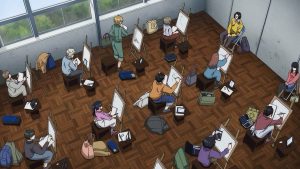 Sometimes I get a little emotional over anime when an ep is overtly sentimental. Sometimes just when it’s that good. In very rare cases (like Uchouten Kazoku Episode 8) both. That was the case here, though it was a different sort of emotion, and the balance leans towards straight-up quality. It inspires me so much when an anime is really about something, especially when it has the chops to examine the human condition with this much intelligence and sensitivity. There’s no agenda here – this is not anime by (production) committee, crafted with the sales pitch in mind. It’s just a really good story told for its own sake.
Sometimes I get a little emotional over anime when an ep is overtly sentimental. Sometimes just when it’s that good. In very rare cases (like Uchouten Kazoku Episode 8) both. That was the case here, though it was a different sort of emotion, and the balance leans towards straight-up quality. It inspires me so much when an anime is really about something, especially when it has the chops to examine the human condition with this much intelligence and sensitivity. There’s no agenda here – this is not anime by (production) committee, crafted with the sales pitch in mind. It’s just a really good story told for its own sake.
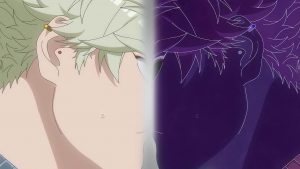 Of course, I have a more personal reason for being emotional watching this one. Teachers have always been important to me. They inspired me as a kid, and I love teaching both adults and kids. Being a teacher was the first thing I ever seriously aspired to, once I was old enough to be past the baseball player/astronaut stage. It’s impossible to overstate the impact a good teacher can have on a child’s life – and that’s a big responsibility. One thing you realize after a few eps is that Blue Period is a story about teachers as much as artists.
Of course, I have a more personal reason for being emotional watching this one. Teachers have always been important to me. They inspired me as a kid, and I love teaching both adults and kids. Being a teacher was the first thing I ever seriously aspired to, once I was old enough to be past the baseball player/astronaut stage. It’s impossible to overstate the impact a good teacher can have on a child’s life – and that’s a big responsibility. One thing you realize after a few eps is that Blue Period is a story about teachers as much as artists.
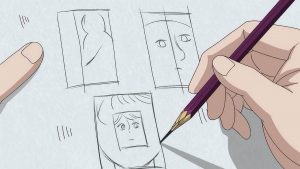 This episode also had the sizzling tension of a good sports anime. I feel for these grommets, with the weight of the world crushing them. There’s so much at stake here, and I wish we lived in a world where a kid didn’t have to have so much of their future be dependent on luck and the whims of a few examiners. But we don’t, certainly not where university is concerned, and the first exam is an unforgiving crucible. The matter of luck comes into play very quickly, as one of the examinees accidentally knocks over Yatora’s easel and breaks his mirror. That’s the sort of random event that can cut any sort of way – no one knows how they’ll react until it happens.
This episode also had the sizzling tension of a good sports anime. I feel for these grommets, with the weight of the world crushing them. There’s so much at stake here, and I wish we lived in a world where a kid didn’t have to have so much of their future be dependent on luck and the whims of a few examiners. But we don’t, certainly not where university is concerned, and the first exam is an unforgiving crucible. The matter of luck comes into play very quickly, as one of the examinees accidentally knocks over Yatora’s easel and breaks his mirror. That’s the sort of random event that can cut any sort of way – no one knows how they’ll react until it happens.
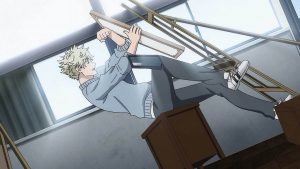 Of course, Yatora isn’t going to be punished by the examiner for such a random event (and one not his fault). But he has to deal with the stress, as does the girl who caused it. As it happens, Yatora is (as usual) grinding too hard on the nature of his self-portrait, and the accident impacts him positively in two ways. It breaks him out of his stressful reverie, and the broken mirror forces him to see himself in a more complicated way. It’s a bit of a nifty dramatic (and symbolic) conceit, I admit, but it totally gets the point across in the context of the moment.
Of course, Yatora isn’t going to be punished by the examiner for such a random event (and one not his fault). But he has to deal with the stress, as does the girl who caused it. As it happens, Yatora is (as usual) grinding too hard on the nature of his self-portrait, and the accident impacts him positively in two ways. It breaks him out of his stressful reverie, and the broken mirror forces him to see himself in a more complicated way. It’s a bit of a nifty dramatic (and symbolic) conceit, I admit, but it totally gets the point across in the context of the moment.
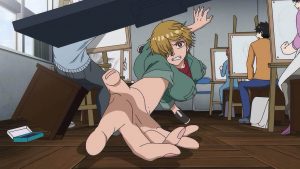 Freed of the duality which is binding him creatively (and aided by Saeki-sensei’s wisdom), Yatora is able to construct a layered and nuanced sketch which even to my Philistine eye is really interesting and distinctive (which seems to be the most important trait in this context). Once done, all he can do it wait – three days in fact – for the results. And even if Yotasuke-kun is correct that a third of the examinees are “just there for the experience”, making the cut for the second exam is still a pretty high bar.
Freed of the duality which is binding him creatively (and aided by Saeki-sensei’s wisdom), Yatora is able to construct a layered and nuanced sketch which even to my Philistine eye is really interesting and distinctive (which seems to be the most important trait in this context). Once done, all he can do it wait – three days in fact – for the results. And even if Yotasuke-kun is correct that a third of the examinees are “just there for the experience”, making the cut for the second exam is still a pretty high bar.
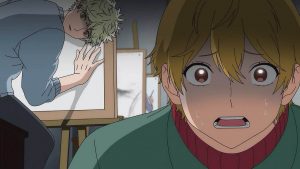 My favorite part of the episode was the aftermath of the exam, where Ooba-sensei had to deal with the emotional wreckage for the students. Put yourself in her place – she’s emotionally vested in what happens. She knows most of her kids are dead men and women walking. But she has to help all of them prepare as if they’re going to have a second exam to prepare for. What does a caring teacher do in this situation? If you’re a teacher who doesn’t care, you just punch the clock and go through your routine. If you’re Ooba-sensei, you adapt to the students’ being mentally trashed, and take them on a field trip to recharge their creative batteries.
My favorite part of the episode was the aftermath of the exam, where Ooba-sensei had to deal with the emotional wreckage for the students. Put yourself in her place – she’s emotionally vested in what happens. She knows most of her kids are dead men and women walking. But she has to help all of them prepare as if they’re going to have a second exam to prepare for. What does a caring teacher do in this situation? If you’re a teacher who doesn’t care, you just punch the clock and go through your routine. If you’re Ooba-sensei, you adapt to the students’ being mentally trashed, and take them on a field trip to recharge their creative batteries.
 Said field trip is not to an art museum, but a natural history one. And quite brilliantly, she has the kids go through as casual observers pre-lunch, not telling them that there’ll be a second and more serious revisit after. It’s the contrast in their perception between the two tours that’s critical – and this is a really brilliant teaching moment by Ooba-sensei. That really gets to me, as someone who understands how hard it is to be a great teacher, and how much being one can change peoples’ lives. These kids really learn something about themselves, especially when the paradox of choice asserts itself in their afternoon sketches.
Said field trip is not to an art museum, but a natural history one. And quite brilliantly, she has the kids go through as casual observers pre-lunch, not telling them that there’ll be a second and more serious revisit after. It’s the contrast in their perception between the two tours that’s critical – and this is a really brilliant teaching moment by Ooba-sensei. That really gets to me, as someone who understands how hard it is to be a great teacher, and how much being one can change peoples’ lives. These kids really learn something about themselves, especially when the paradox of choice asserts itself in their afternoon sketches.
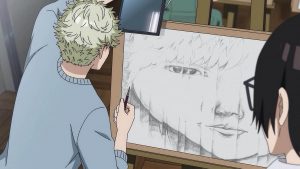 This is just great stuff, that’s the essence of it. We haven’t even talked about poor Yuka, for whom a a self-portrait was the worst possible assignment to draw (not that I think it would’ve mattered). This is where the luck factor plays in – for a kid facing brutal identity issues, being asked to draw themselves is unintentionally (though perhaps not totally unintentionally – these are adolescents, and the examiners know that) cruel. We’ll revisit Yuka’s story to be sure, but Yatora does pass – as do Haruka and Maki. Now comes the real test, an oil paining created over three days – and I can’t wait to see how Blue Period brings that drama to life.
This is just great stuff, that’s the essence of it. We haven’t even talked about poor Yuka, for whom a a self-portrait was the worst possible assignment to draw (not that I think it would’ve mattered). This is where the luck factor plays in – for a kid facing brutal identity issues, being asked to draw themselves is unintentionally (though perhaps not totally unintentionally – these are adolescents, and the examiners know that) cruel. We’ll revisit Yuka’s story to be sure, but Yatora does pass – as do Haruka and Maki. Now comes the real test, an oil paining created over three days – and I can’t wait to see how Blue Period brings that drama to life.


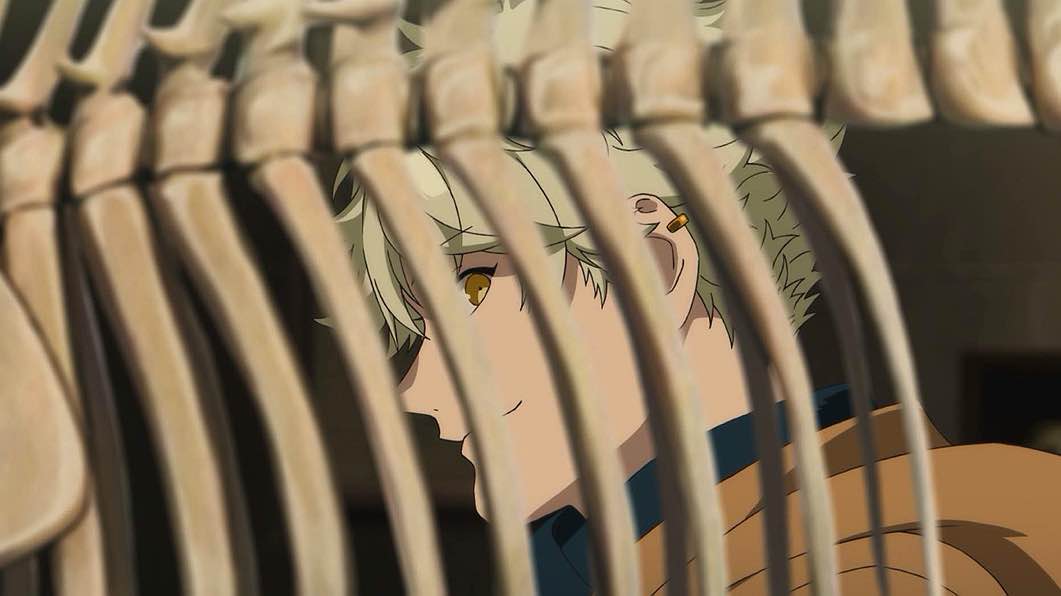
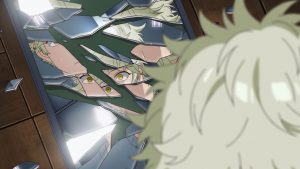
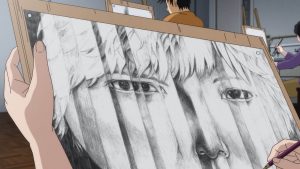

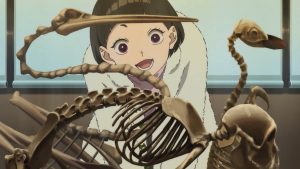
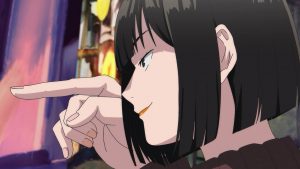
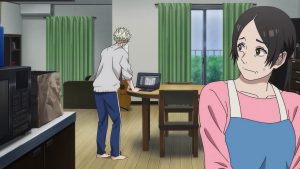

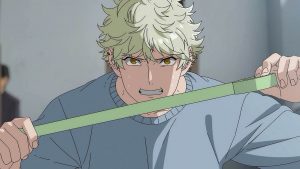
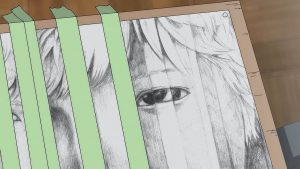
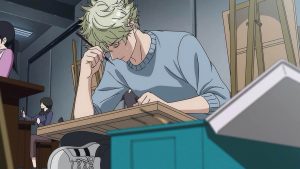
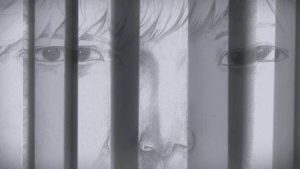


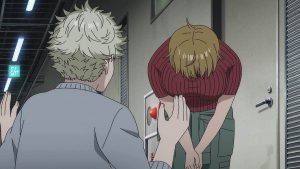
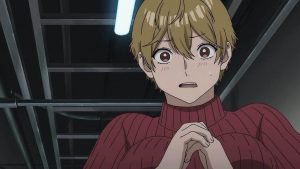

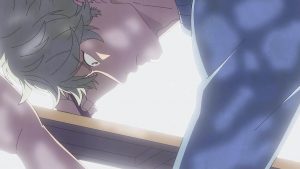
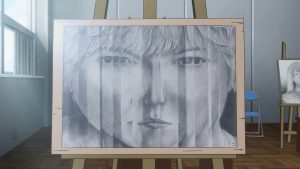
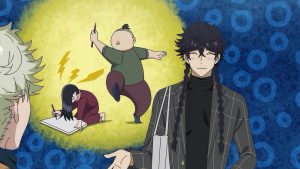

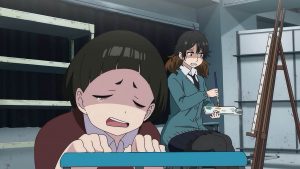
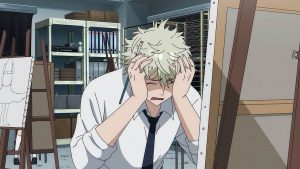
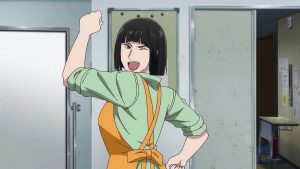


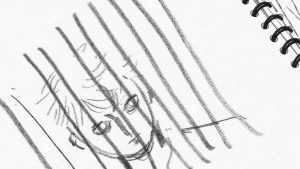



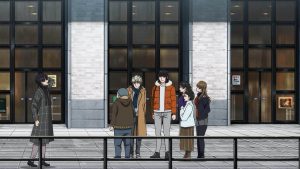
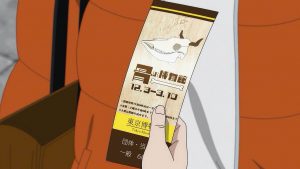
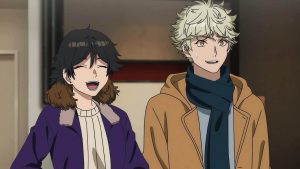
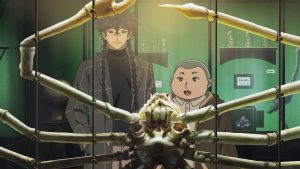
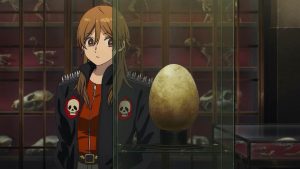

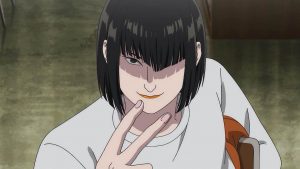

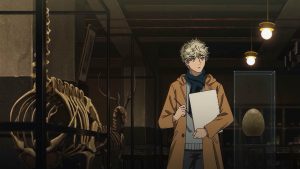


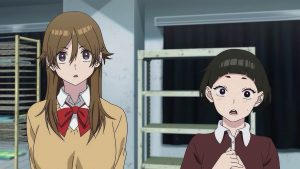



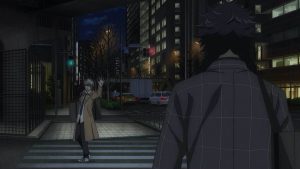
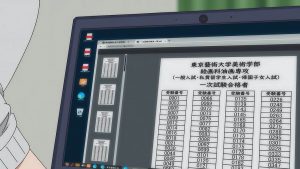
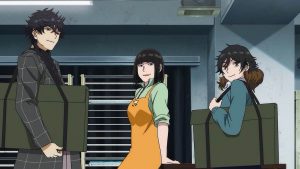
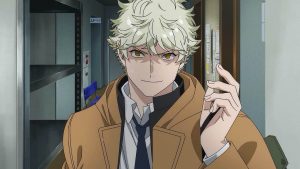
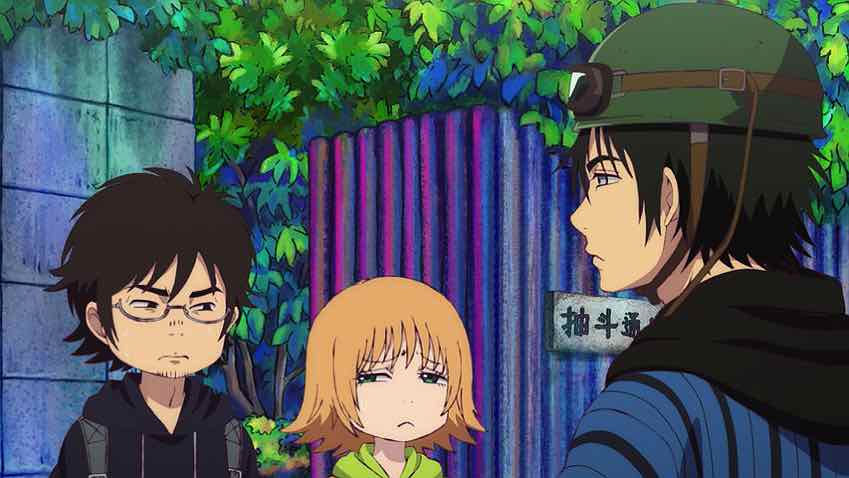
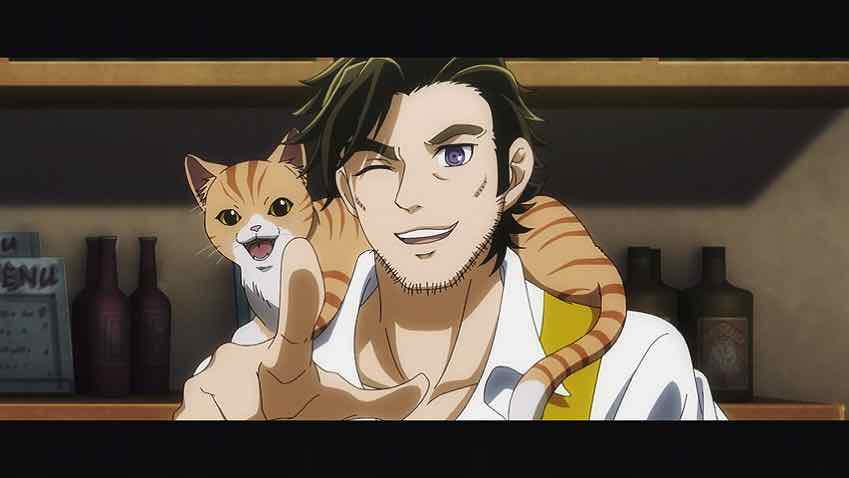
leongsh
November 14, 2021 at 6:18 pmLoved this episode too.
Yatora really struck it lucky to have Ooba-sensei as his art cram school teacher/coach/mentor. She has been pushing and challenging him as well as being honest and supportive of him. It takes 2 hands to clap, so to speak, and Yatora responds in kind to her coaching and guidance.
Part 2 of the entrance exam where they have to produce an oil painting within 3 days is nerve-wrecking since you would be carrying the stress over 2 nights. The stress could take you down before the end of the 3rd day. But before then, there’s 1 week to go. Anything can happen within that time period. He hasn’t recovered from his stress rash yet.
Earthlingzing
November 15, 2021 at 7:56 pmOoba-sensei’s teaching is really great. I’d say the unrealistic part of this show is having only 3 students pass, that’s a high attrition rate for a cram school this good.
Guardian Enzo
November 15, 2021 at 9:09 pmEven when you consider only 5% of the Geidai examinees get in?
Earthlingzing
November 16, 2021 at 12:28 amI was thinking 3 would be closer to the average for people who are willing to invest so much time in cram school. But of course, the point is debatable.
Rob Barrett
November 18, 2021 at 7:53 amI actually love how Yatora’s self-portrait contrasts with the way he’s drawn: the gap between the photorealism of the portrait and the stylization of our main character was already clear in the manga, but it’s even better in the anime with the addition of color.
Guardian Enzo
November 18, 2021 at 8:36 amI haven’t read the corresponding manga chapter but I certainly agree it was effective in the anime.